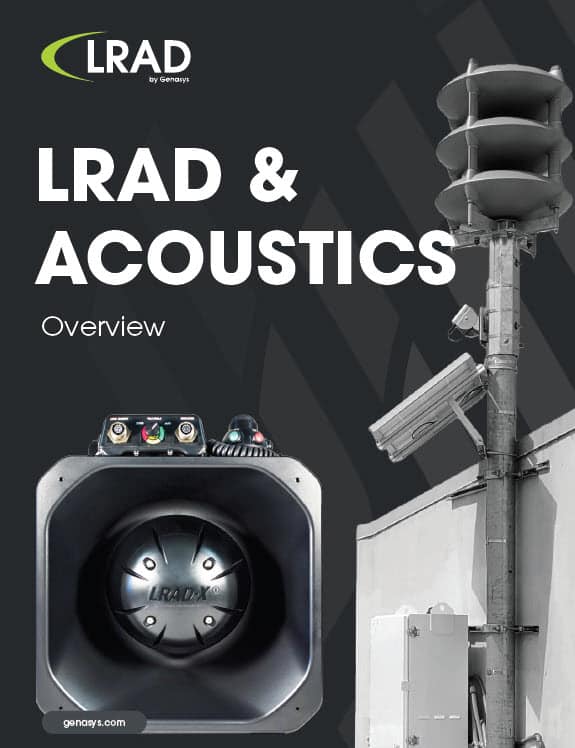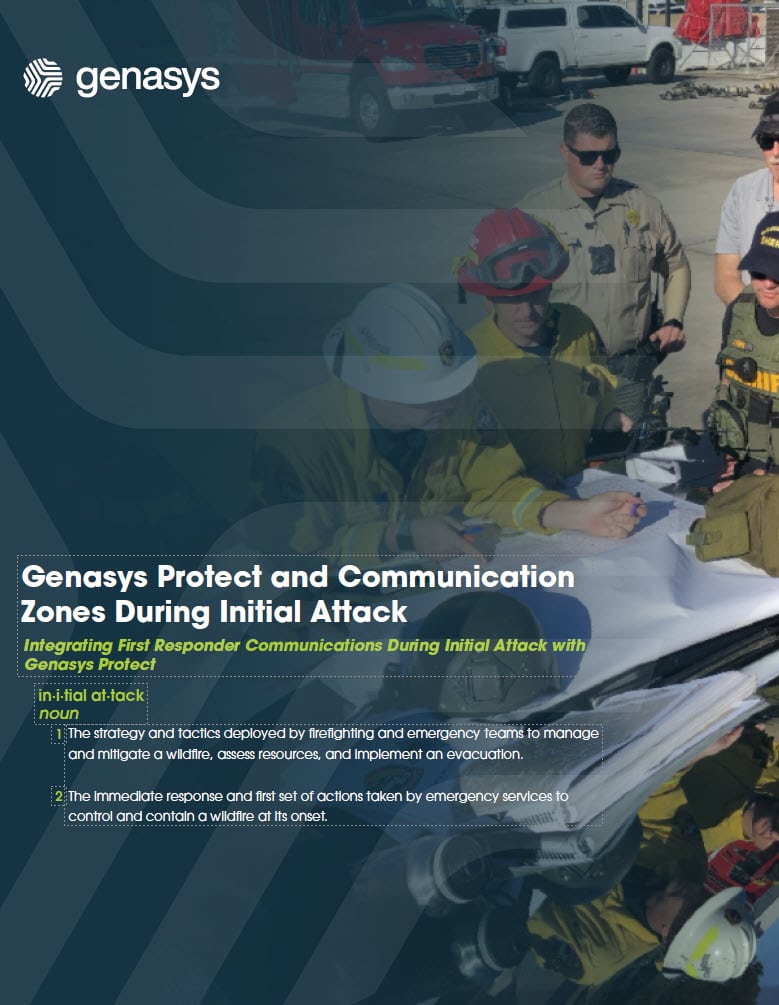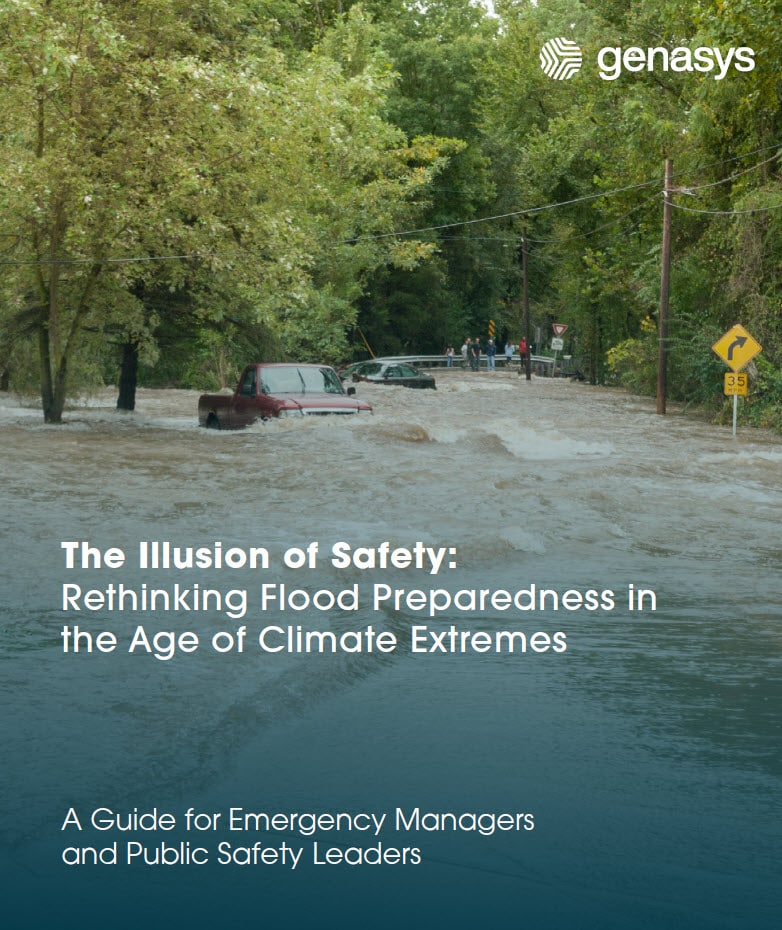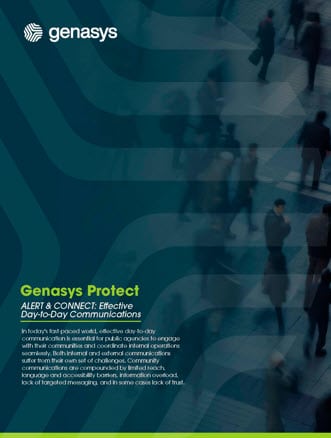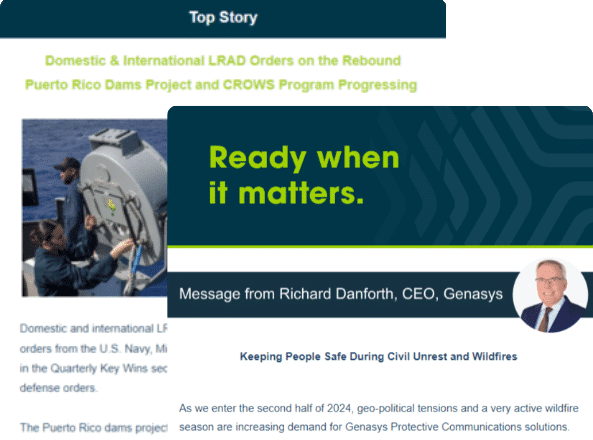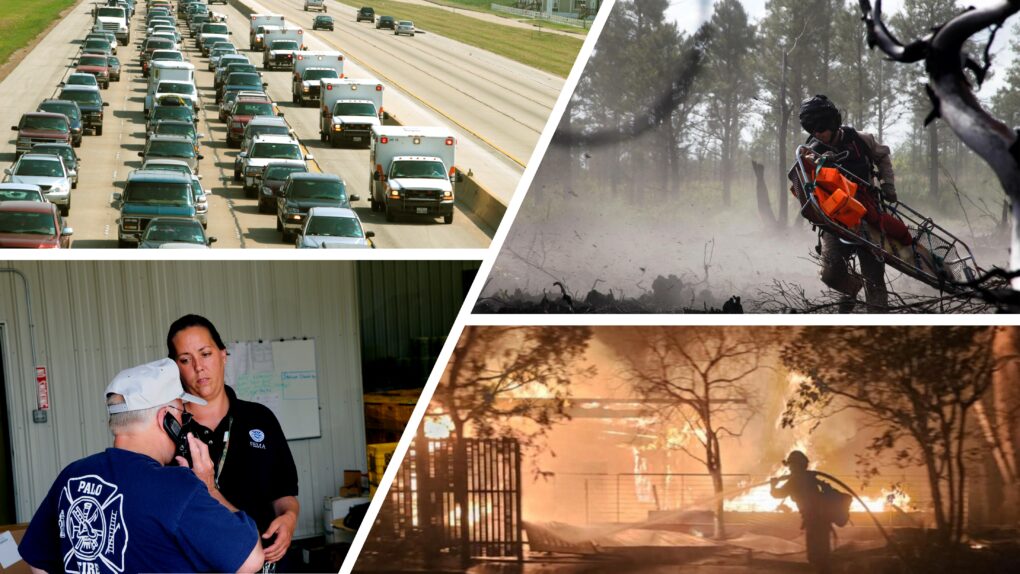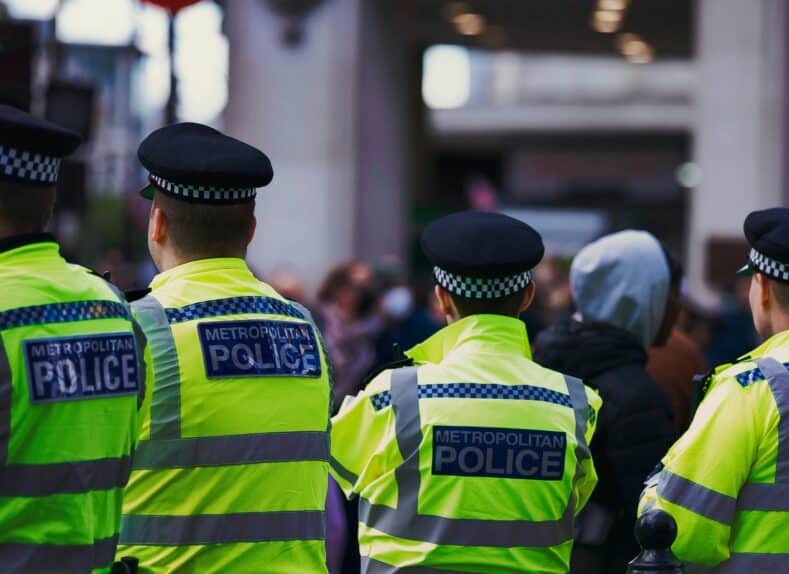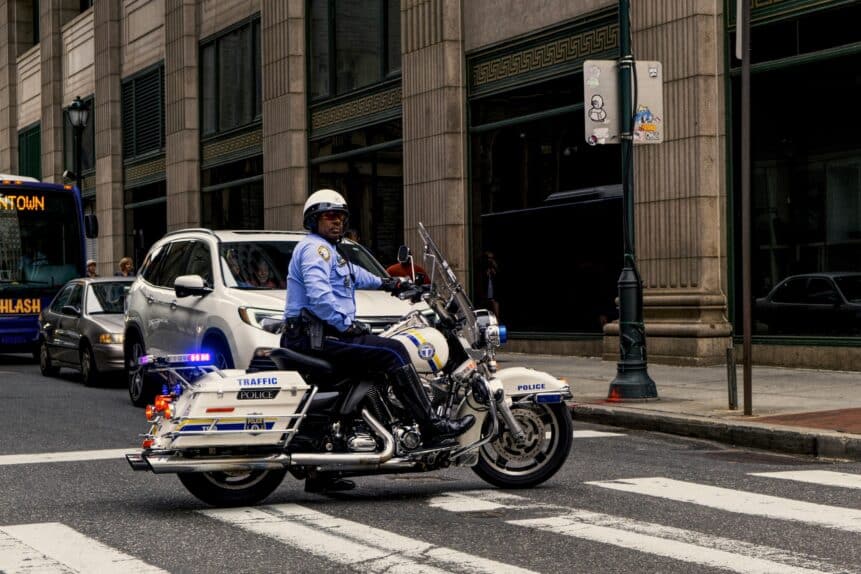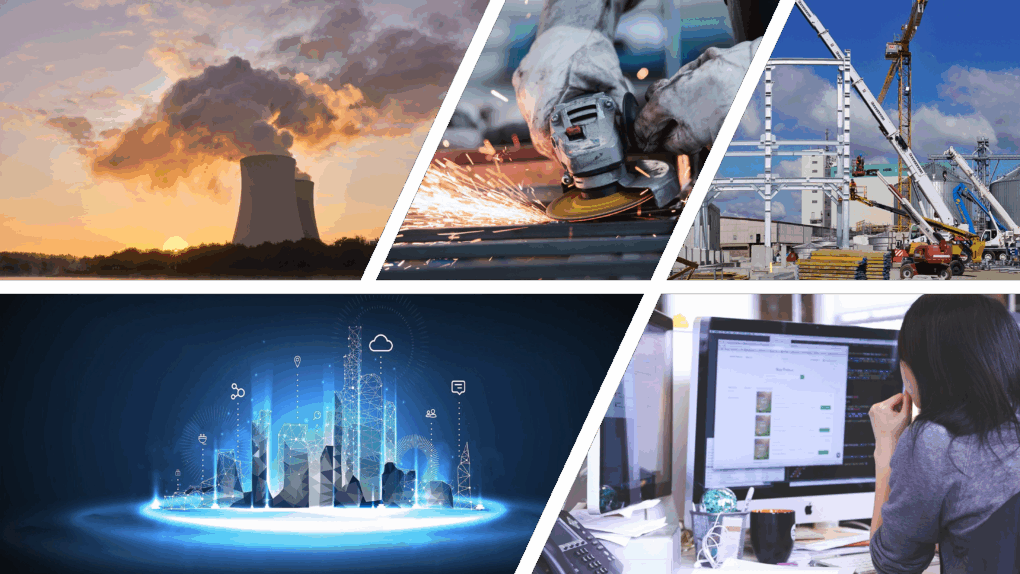By Robert Putnam, Senior Marketing Manager, Genasys Inc.
No time to read the whole blog? Click to see the key takeaways:
- Outdated sirens, bullhorns, and vehicle PA systems leave agencies facing confusion, delayed compliance, and unnecessary exposure.
- By enabling remote operability through Reach Technology for LRADs, and with built-in network control for ACOUSTICS, these systems extend command beyond the scene itself, allowing leaders to deliver clear, authoritative instructions without exposing personnel.
- From Puerto Rico’s automated dam-warning network to the Port of Houston’s storm-response protocols and Japan’s J-ALERT-enabled ACOUSTICS towers, remote-operated acoustic systems reduce risk, accelerate response, and improve public safety outcomes.
- Unlike sirens, PA systems, or bullhorns, LRADs maintain intelligibility in high-noise environments, providing critical instructions where conventional systems fail.
Communication failure or the inability to communicate costs lives. More than two decades ago, that truth led to the development of the first LRAD, built to deliver unmistakable voice warnings over distance when other tools fell short.
Since then, LRADs and ACOUSTICS have served militaries, public safety agencies, and critical industries worldwide, providing reliable clarity in countless high-stakes operations.
Today, the mission has evolved. Remotely operated LRADs, powered by Reach Technology, and network-controlled ACOUSTICS extend that proven clarity beyond the scene itself, giving leaders the ability to deliver precise instructions from secure command centers.
By merging unmatched clarity with remote control, these systems cut through noise and chaos to deliver commands that can’t be missed. Used by law enforcement, public safety agencies, military units, border security teams, and local governments, LRADs with Reach Technology ensure that critical instructions are heard, understood, and acted on, when every second counts.
Guiding Communities to Safety with Disaster Zone Communication
When disaster strikes, people need specific instructions, not just sirens. Remotely operated LRADs and ACOUSTICS extend that life-saving clarity in local areas and across entire regions, even when roads are blocked or infrastructure is down. They broadcast both alert tones and precise instructions, telling residents to evacuate, shelter in place, or move to higher ground, directly from a secure command center.
Real-World Deployments:
- Puerto Rico’s network of 37 dams will soon use remotely operated ACOUSTICS systems integrated with sensors to issue automated voice warnings downstream during emergencies, guiding communities without waiting for manual activation.
- The Port of Houston, Texas integrated fixed ACOUSTICS units with storm-response protocols, enabling remote broadcasts of evacuation and safety instructions simultaneously to ships and dockworkers during severe weather.
- During Colorado’s 416 Fire, local responders relied on truck-mounted, on-scene LRADs to broadcast evacuation orders throughout neighborhoods, a proven capability that today could be deployed as a fixed, remotely operated network for faster, coordinated instructions.
- After the 2011 Japan tsunami, mobile PA trucks were dispatched to deliver warnings, but in the years since, fixed towers, including Genasys ACOUSTICS integrated with J-ALERT in towns like Ando, have replaced that approach, providing centrally managed, wide-area voice coverage.
These cases show the progression from mobile, on-scene deployments to automated, remotely operated networks, ensuring residents hear clear, trusted instructions when it matters most.
Restoring Order Through Communications During Civil Unrest and Mass Gatherings
Large-scale gatherings, from protests to sporting events, can escalate quickly when public safety agencies lose the ability to communicate effectively.
Traditional bullhorns and PA systems are drowned out by sirens, music, or crowd noise. LRADs have long filled this gap with clear, intelligible voice commands and targeted mass notifications. These examples show how law enforcement and local governments manage crowds while prioritizing safety, communication, and accountability.
Real-World Deployments:
- Columbia, South Carolina police used LRADs after major football games to disperse rowdy post-game crowds with minimal arrests.
- At the Riverbend Music Festival in Chattanooga, Tennessee, as well as the Houston Rodeo & Livestock Show in Texas, police replaced outdated bullhorns with LRAD systems to deliver clear crowd guidance, improving both public safety and event continuity.
- In 2024 at various campus protests around the U.S., law enforcement deployed LRADs to issue dispersal orders, helping to de-escalate tensions before they spiraled.
When mounted in high traffic areas or on unmanned ground vehicles, LRADs can be remotely operated directly from command centers.
Defense and Border Security
Modern defense and border operations require both deterrence and communication in unpredictable environments. Remotely operated LRADs can transform passive surveillance into an active first response, enabling defense and border security personnel to warn, direct, and deter from safe standoff distances.
Real-World Deployments:
- At Vandenberg Space Force Base in California, LRADs are used to manage protests, protect infrastructure, and safeguard military personnel.
- U.S. Border Security and the National Guard use LRADs to clearly transmit alerts, warnings, and critical information to potential border crossers.
From combat missions to border security, LRAD ensures communication is a force multiplier, not a limitation.
Active Shooter and High-Risk Incidents
Law enforcement encounters with armed suspects demand precise, calm communication at safe distances. Remotely operated LRADs can let officers maintain standoff distance while retaining full authority and control of the situation.
Real-World Example:
- Pittsburgh, Pennsylvania police used an LRAD to play a suspect’s mother’s voice, ending a standoff peacefully. Today, similar interventions can be run entirely from a command center, without officers on-scene.
- LRAD was used by SWAT officers in Oklahoma County, Oklahoma to serve a high-risk warrant and defuse a potentially dangerous situation.
Acoustic Hardware That Protects and Connects
From stadiums and disaster zones to military bases and port security, remotely operated LRADs and ACOUSTICS prove their worth daily. By delivering unmatched clarity and range, they help law enforcement, first responders, military personnel, and local governments manage crises, safeguard lives, and strengthen public trust.
In a world where emergencies are unpredictable and communication is mission-critical, remotely operated acoustic hardware isn’t just a tool, it’s a lifeline.
Relying on outdated sirens and on-scene PAs leaves agencies vulnerable to confusion, delay, and unnecessary risk. Remotely operated acoustic systems close that gap.
Contact Genasys to learn more about LRAD®, Reach Technology, and ACOUSTICS and schedule a demo.

